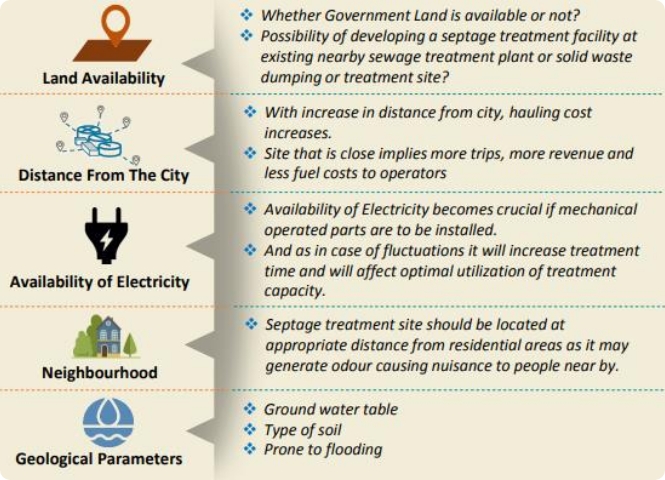There is a great need for the development of appropriate inclusive Sanitation technologies, even though solutions for entire inclusive Sanitation systems will not rely on technology alone and must be considered within the local context. New technologies are in general based on pioneering developments in research, and historically research agendas have been driven by countries where centralised sewer-based sanitation solutions are the accepted norm. This points to a need for solution-oriented inclusive Sanitation research to be conducted in countries where it is directly relevant. In addition, for new knowledge to get taken up and influence policy, it requires local researchers working together with the urban governments that are responsible for inclusive Sanitation. Due to the urgent need for technical solutions, research and implementations need to continue to be conducted in parallel, getting to scale as rapidly as possible. Technologies need to be selected not only based on the specific characteristics of FS, but also on factors such as the local market demand for resource recovery of treatment products. Provided here are some examples of current research.
COLLECTION AND TRANSPORT
Currently, the best available technology for sludge removal is vacuum trucks, but they are typically expensive and cannot reach households located on narrow streets and alleys. The BMGF-funded Omni-ingestor project aims to develop equipment that is more dexterous, evacuates FS more quickly, can remove dense FS efficiently (> 40% solids) and is also able to dewater FS onsite. As water is heavy and therefore expensive to transport; dewatering FS and treating the effluent onsite would allow for the treated water to be directly reclaimed or safely disposed of in drains. This would greatly reduce transport costs and allow for more emptying operations performed between trips to the FSTP, as well as reducing time spent in traffic. Various prototypes are currently being developed by the private sector.
ONSITE TREATMENT TECHNOLOGIES
Achieving reliable levels of treatment with onsite sanitation technologies presents a very challenging problem due to factors such as the lack of technical management, demands for reliable energy and high costs. Some examples of technologies include hydrothermal carbonisation, microwave technology, supercritical oxidation, pyrolysis, and electrochemical processes.
The sludge from pit latrines or septic tanks is typically dumped untreated into open sewers, irrigation fields, open lands, or surface waterways as they get full. Several (FSTPs) have been established in various parts of the country to address the difficulties in preserving public health and the environment. However, there are some specific issues at every FSTP observed with FSTPs
Case study: Scheduled Desludging Activites
Irregular receival of FS: Some FSTPs receive FS more frequently than the plant's treatment capacity and occasionally less frequently than the plant's treatment capacity. These irregularities may result in performance issues. Scheduled desludging activity could provide a solution to this issue by providing a continuous FS supply for treatment.
Case study: Requirement for Sufficient Spacing
Space constraint: Sufficient spacing is required for optimisation of co-composting process specifically mixing ratio of dry FS and MSW/vegetable waste. Clustered approach with FSTPs that are closer to each other, or a private provider willing to coordinate with nearby cities could address this issue.
Case study: Public Private Partnerships (PPP)
Low availability of vacuum trucks: In few cases, only one vacuum truck for the delivery of FS is available leading to over-burdening of the truck/owner for FS delivery. Through public private partnership (PPP), private providers can carry out desludging activity with their own trucks. This would performance-based contract and would reduce the capex burden on local government and improve the service.
Case study: Supplementary Heating Sources
Insufficient solar energy to run FSTPs: Some FSTPs uses solar energy to operate, increasing the system's energy efficiency. However, the energy produced from solar radiation is insufficient to fulfil the FSTP's energy needs. As an energy reserve, supplementary heating sources including fuel, grid electricity or electricity from renewable sources, and heat pumps could be used. Energy storage devices are used to store solar thermal energy during periods of high sunlight and use it during periods of low or no sunlight.
Case study: Assessment of Treatment Units
Industrial effluents: In some FSTPs, industrial effluent is received occasionally instead of FS from the vacuum trucks, and it becomes difficult for the current treatment system to remove the pollutants, particularly heavy metals. To distinguish between residential and industrial sludge, and to assess the performance of the treatment units, tests such as color, odor, temperature, pH, and electrical conductivity are needed to be carried out on a weekly basis.
Academic institutions and philanthropies are developing ground-breaking technologies that improve efficiency, cost-effectiveness, and quality of sanitation infrastructure. Some examples:
- The Research Triangle Institute is developing an integrated toilet technology that will separate solid and liquid waste, dry and burn solid waste using a combination of mechanical, solar, and thermal energy (primarily driven by down-draft gasification), disinfect liquid waste, and convert the resulting combustion energy into stored electricity.
- Caltech is developing a comprehensive, human waste treatment and toilet system that has at its core a photovoltaic-powered (PV), self-standing electrochemical chemical reactor that generates hydrogen for energy and nitrogen for fertiliser as by-products of treatment.
- Loughborough University is developing a system that is comprised of a draining balance tank; filters; high temperature pressure reactor; and evaporator-sodium chloride separation. The system operates in three stages: solids-liquid separation, followed by auto-thermal treatment of the solids to provide heat for water and salt separation.

